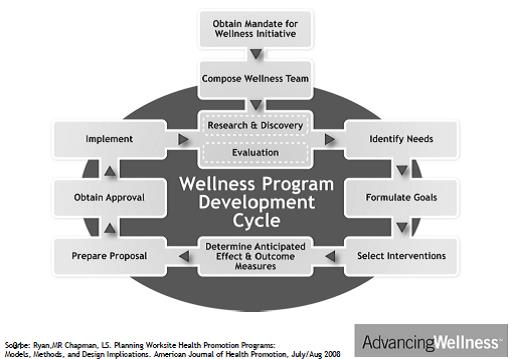The key to reducing healthcare costs can be found in a great wellness program, says Mari Ryan, CEO and founder of AdvancingWellness in Watertown, Massachusetts. The idea is gaining traction—7 in 10 employers say developing a workplace culture where employees are responsible for their health is a top priority.
 |
Ryan, who recently shared her expertise in a webinar presented by BLR® and HR Hero®, is a certified Worksite Wellness Program Consultant and has published articles on worksite health promotion in the American Journal of Health Promotion and Occupational Health and Safety Magazine.
Why Have a Wellness Plan?
Employee wellness can be directly connected to some of the top concerns of CEOs and HR professionals. The concerns Ryan says she hears most often when talking to executives include escalating healthcare costs, a disengaged workforce that results in decreased productivity, and low employee morale.
While a wellness program may not be an end-all-be-all solution for these concerns, it certainly is helpful, especially in the area of healthcare costs. As Ryan points out, we’re not getting any younger and healthcare costs continue to escalate. Waist circumference has increased by 54.2% from 1999 to 2011, indirect costs for heart disease are estimated to increase 61% between 2010 and 2030, and sleep difficulties cost U.S. companies $64 billion a year in lost productivity.
A potential strategy to minimize these costs is through worksite health promotion, says Ryan—employer initiatives directed at improving the health and well-being of workers, and, in some cases, dependents.
Looking to launch your own winning wellness program? Start on December 15, 2014, with a new interactive webinar, Workplace Wellness Programs: How to Motivate Your Employees to Better Health. Learn More.
How to Get Started
According to Ryan, three things are necessary to build a solid foundation for a wellness initiative:
- Obtain a mandate from management. This is recognized as one of the most critical success factors for wellness programs, says Ryan. You need organizational resources and support, which typically starts with your senior management team. The support of middle managers and supervisors is also an important factor in getting the initiative off the ground, because if they aren’t on board, your employees may not even get the opportunity to participate. Get a spokesperson to engage with management on behalf of the program—this individual doesn’t have to be at the height of wellness like a marathon runner or mountain climber. In fact, says Ryan, the more “human” the spokesperson, the more likely he or she is to get everyone involved.
- Define a vision and mission. This helps to establish an important link, namely how exactly this program will fit into furthering your company’s overall goals and strategy. A mission or vision statement clearly outlining this link is not only attractive to senior management but also communicates to employees the importance of the initiative and how it is incorporated into their day-to-day work.
- Compose a dedicated wellness team. These individuals will be critical to the program’s success, and while Ryan suggests designating a champion to lead the group, the team can take many forms. Depending on the size of your company you may have an advisory committee; if your organization covers a wide geographical area, you may have ambassadors to promote the program. Have the team represent the diversity of your organization so the voice of the employees becomes a prominent element of the program, says Ryan.
A healthier staff is a more productive staff. Join us December 15, 2014, for a new interactive webinar, Workplace Wellness Programs: How to Motivate Your Employees to Better Health. Earn 1.5 hours in HRCI Recertification Credit. Register Now.
The Wellness Development Cycle
Planning is paramount, and after you’ve obtained your mandate, established a vision and mission, and assembled your wellness team, Ryan suggests the cyclical process below to ensure your program stays on track, relevant, and engaging:

Keep this model in mind as you begin to build your plan for a wellness program—it will keep the initiative comprehensive and credible while also helping it evolve to meet your organization’s needs.
In tomorrow’s Advisor, Ryan elaborates on the seven steps to follow when creating a wellness program, plus we announce the timely webinar, Workplace Wellness Programs: How to Motivate Your Employees to Better Health.

I believe there are also benefits to employers that offer wellness programs under the ACA.